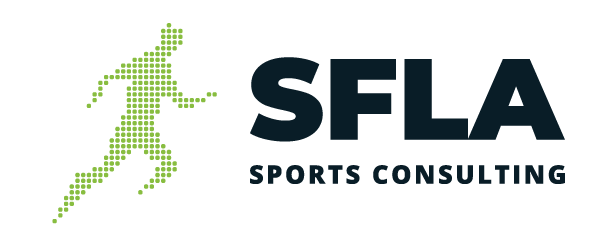By Vasilia Polycarpou, The Sports Financial Literacy Academy
Living in a material world where we aspire to have and experience the best things in life, the temptation of making impulse purchases on credit can be a trap. Making purchases on credit is a major part of everyday life to the point that it is being frequently abused and may be transformed into excessive unmanageable debt.
It is important to understand that even though the overall idea of debt is not something you may want, given that it increases your risk; there is ‘good’ and ‘bad’ debt. This differentiation between good and bad debt can help athletes utilize it when and where it best suits their overall financial plan.
Good debt is the kind of debt which can be used to buy assets. This may range from investment loans which can provide high returns, loans for income-producing real estate, with real estate being rented out with the resulting revenue being used to repay the loan, to business loans for entrepreneurs looking to expand and grow their business.
Moreover, education loans may also be considered examples of good debt, since according to statistics, individuals with college degrees tend to make more over a lifetime; usually around US$500,000 (depending on location) more than those without a higher education degree.
On the other hand, bad debt refers to loans used to purchase depreciable or consumable items, such as travel tickets to go on vacation, clothes, cars, etc. For example, personal/consumer loans or bank overdrafts are an unwise investment, since they carry high interest rates and they usually cater for purchases which will not increase in value.
A real-life example of bad debt worth mentioning, is that of former NFL quarterback Vince Young, who filed for bankruptcy protection in 2014. It was said that even though he was facing financial difficulties he still took a high-interest, seven-figure loan for a $300,000 birthday party.
Credit card debt is another form of bad debt, due to the high interest rates and finance charges associated, as in the case of consumer loans and bank overdrafts. A credit card debt can be good debt if you pay the money you borrow back in full each month. This helps increase your credit score and you incur no interest charges; plus, you may accumulate bonus points to be used towards future purchases.
It is important to understand however, that even loans for seemingly good investments may lead to major financial issues if mishandled. Since some bad debt is unavoidable, it is crucial to be in control of the situation and to have a reasonable strategy planned out for its timely repayment.
When it comes to managing debt, regardless of its size, just as required of you in sports, discipline, self-control and awareness are key for a healthy financial life. As a first step, make sure you keep track of who your creditors are, the total amount of debt you owe, your monthly instalments, the interest on your loan. as well as the relevant due dates. Keeping an updated debt list will help you keep your financial obligations in order, giving you clarity on your debt position as well as the steps you need to take.
Furthermore, being prompt and consistent with your monthly installments will allow you to be in control of the situation, avoiding late payments which could lead to debt accumulation and consequently overdue interest and other default charges which could place you in a difficult financial position. This can be achieved by either creating a standing order agreement with your banking institution or by simply using a calendar system to record the installment due dates and set relevant reminders in advance. It should also be underlined, that missing an installment is not the worst thing in the world as long as you get back on track by proceeding with the payment prior to the due date of the next installment.
Take the example of ex NFL player Ryan Broyles, who had a poor credit report with late payments and extremely large bills. After taking an interest in personal finance for self-improvement purposes, he realized he needed to make some changes in his financial life. After signing a $3.6 million contract with the Lions, Broyles paid off all of his debt and set up automatic payments for all of his bills.
Additionally, another action you need to take is to at least pay the minimum (monthly) payment of your credit card in case you cannot afford to pay any additional amount on top of that, in an attempt to keep your account stable and prevent your debt from growing further, potentially leading to default. Pay the minimum payment on all credit cards except for the one with the highest interest rate where you should be paying much more in order to get the debt down as fast as possible. Once that card is paid off, move on to the card with the next-highest rate and pay that one down. Keep up that plan until all the cards are paid off. This payment structure will save you a lot in interest.
Highlighting the damage high interest rates can cause, it is important to look into the example of NHL player, Jack Johnson who earned more than $18 million during his nine-year career but filed for bankruptcy in 2014 after taking numerous risky loans at high interest rates on which he defaulted.
Prioritizing your debts is perhaps the most crucial part of the process. After thorough evaluation, you need to decide which debt is best to settle first. To be more specific, credit card debt has higher interest rates than other forms of debt and should therefore be prioritized. Prioritizing payments on the cards that have higher interest rates is a great move since they are the ones that can cause the most damage. Once you have the rates each credit card company charges, you can proceed and organize a payment structure, keeping the aforementioned in mind.
Bouncing back from debt is possible once you set your mind to it. Olympic gold medal figure skater, breast cancer survivor and television personality Dorothy Hamill, was reportedly raking in $1 million a year to skate in prime-time TV specials, at the peak of her career in the 1980s. However, after years of excessive spending, and bad financial advice, she had to file for bankruptcy in 1996. To help pay off her debt she toured the professional ice-skating circuit for several years, returned to television and published her autobiography. She also partnered with vitamin brand Nature’s Bounty to promote health and wellness. Her will to succeed, in addition to the use of proper financial management practices, allowed her to recover and create a net worth of $5 million.
All in all, keeping your debt under control is not impossible with careful planning and discipline and self-awareness. Being in debt is definitely not the end of the world once you have the knowledge and maturity to know how to deal with it strategically. We all make mistakes by acting impulsively but what is important is being aware of our actions, taking responsibility and making the effort to improve ourselves to avoid repetition.
The Money Smart Athlete® Blog is established and run by the Sports Financial Literacy Academy® (SFLA). Through its education programs the SFLA has the vision to financially educate and empower athletes of all ages to become better people, not just better athletes. For more information on our courses, our SFLA Approved Trainer Program®, and how they can benefit you and your clients, please get in touch with us at [email protected].

